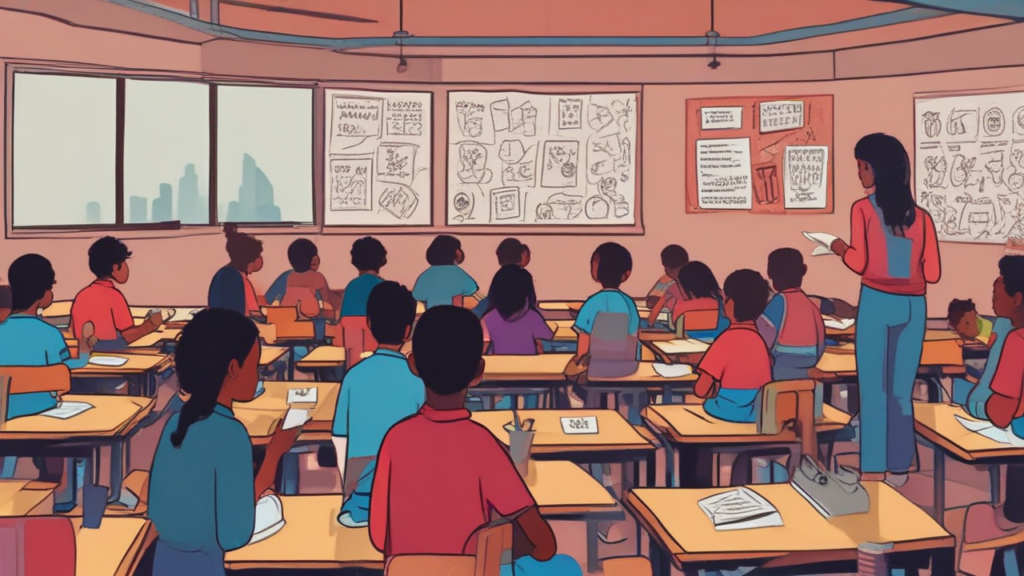Understanding the Drug Menace: Causes and Solutions

Key Highlights
- Drug abuse, also known as substance use disorder, is a complex public health issue impacting millions globally.
- The United States grapples with particularly high rates of drug misuse, fueled by opioids and stimulants.
- Socioeconomic disparities, mental health disorders, and environmental factors significantly contribute to drug addiction vulnerability.
- Education, community outreach, and accessible mental health resources are critical for prevention efforts.
- Holistic approaches to treatment, such as integrating technology and therapies, show promise in supporting long-term recovery.
- Effective policy measures require a balanced approach, combining legal deterrents with accessible rehabilitation and harm reduction strategies.
Introduction
Drug abuse, or substance use disorder, is a big public health problem, a menace of drug abuse that impacts people, families, and communities around the world, leading to various psychological problems. We need to understand the many reasons behind this issue, like economic differences and mental health needs. This blog will look at the issue of drug abuse and the treatment of substance use disorders. It will check out the root causes and look at new ways to tackle it, through education, prevention, treatment, and better policies. By raising public awareness and having informed conversations, we can help reduce the serious effects of the menace of drug abuse. We also want to support people who are affected by this global issue.
The Rise of Drug Abuse: Understanding the Scope

The issue of drug abuse keeps growing and has become a big concern for public health worldwide. It goes beyond countries and social classes, affecting many lives and putting a heavy burden on healthcare systems and overall well-being.
Several reasons lead to this rise. This includes easier access to certain drugs, changing social norms, and ongoing gaps in healthcare and support. To handle this changing situation, it is important for policymakers, healthcare providers, and communities to understand the trends and patterns of drug abuse.
Global vs. United States Trends in Drug Use
Drug use shows different patterns around the world. Some areas and groups are affected more than others. In the United States, drug misuse and overdose deaths have become a serious problem, mainly due to the opioid crisis.
Globally, there is a rising demand for synthetic opioids like fentanyl. These drugs are very powerful and easy to find. Also, taking prescription drugs for non-medical reasons, especially stimulants and tranquilizers, is still a big issue.
It is important to notice these global patterns, particularly during June when we need to understand the specific problems each country faces, including the United States. This knowledge is critical for creating focused actions and working together globally to fight drug misuse.
The Impact of Pandemics on Drug Abuse Rates
The COVID-19 pandemic has greatly affected public health. It has made existing substance use disorders worse and increased drug abuse rates. Social isolation, financial struggles, and problems with healthcare have led to more people using drugs again.
The pandemic has shown that we need to focus on mental health. The stress and uncertainty have caused more anxiety, depression, and trauma. These issues are risk factors for substance abuse.
As the world deals with the long-term effects of the pandemic, it’s important to focus on mental health support. We need to improve access to treatment and build stronger social safety nets. This can help reduce the lasting impact of the pandemic on drug abuse rates.
Identifying the Root Causes of Drug Addiction
Understanding why drug addiction happens is important for creating good prevention and treatment plans. The path to addiction through the repeated use of a drug is complicated and different for everyone. However, some key factors, including mental illness and mental health triggers, are important to look at. These include social and economic conditions, mental health triggers, and biological reasons.
To address these issues, we need different methods that involve social support, mental health care, and health treatments. By dealing with the root causes, we can build a better support system. This will help people be stronger, lower risk factors, and encourage long-term recovery.
Socioeconomic Factors and Drug Abuse
Socioeconomic factors greatly affect drug abuse patterns during adolescence, especially among family members. People from less advantageous backgrounds are more at risk. Issues like poverty, few chances for education and jobs, and exposure to violence can lead to the use of drugs as a way to cope with tough situations.
Moreover, communities that are often left out see limited access to healthcare. This includes mental health services and addiction help, which keeps the cycle of drug abuse going. To break this cycle, we must address social inequalities, improve economic conditions, and create fair opportunities for everyone in society.
Environmental factors, like drug trafficking and easy access to drugs, also increase risks. It is important to create safe and supportive places, build community strength, and encourage positive social norms to lessen the effects of socioeconomic factors on drug abuse.
Psychological Triggers for Substance Abuse
Psychological triggers and mental health issues play a big role in how likely someone is to abuse substances, including drug abusers. Things like trauma, abuse, long-term stress, and mental health disorders—like depression, anxiety, and PTSD—can make people seek comfort in drugs.
Also, people who have low self-esteem, who struggle to cope, or who find it hard to manage their feelings may turn to substances to deal with emotional pain or difficult situations. Understanding how mental health and substance abuse are connected is very important for creating effective treatment.
To address psychological triggers, we need a complete approach that combines mental health care, including mental health services administration, with substance abuse treatment. Trauma-informed care, cognitive behavioral therapy (CBT), and other proven methods can help people learn healthy coping skills and deal with their mental health issues. Cognitive behavioral therapy has been shown to be effective in treating mental health challenges.
The Role of Education in Combating Drug Abuse

Education is key in the fight against drug abuse. It helps people learn about making good choices and finding healthy ways to cope. When we talk about the dangers of drug use, we can clear up misconceptions and challenge social norms that make drug use seem acceptable. This will help everyone take responsibility for their own health.
Good drug education programs go beyond just schools. They involve families, communities, and the media to share the right information and break down negative stereotypes. By creating a safe space for open conversations, we can help individuals feel confident to ask for help when they need it. This way, they can make smart choices for their health and their future.
School-Based Prevention Programs
School-based prevention programs are important for helping young people learn about drug abuse. They give students the knowledge, skills, and strength to say no to drug use. These programs are usually part of health classes. They offer age-appropriate facts about the dangers of drug abuse, support good decisions, and teach ways to handle stress and peer pressure.
Good school-based prevention programs use fun activities, open talks, and support from friends. This creates a safe place where students can talk about their worries and build healthy habits. By reaching students early, these programs work to stop or slow down substance use and support long-term health.
These programs do more than just share facts. They also help kids build self-esteem, learn social skills, and support positive social norms on secure official government organization websites. By looking at personal and environmental risk factors, these well-rounded prevention strategies help make schools healthier and brighter for all students.
Community Awareness and Outreach Efforts
Community awareness and outreach are important parts of a complete plan to fight drug abuse. By involving community members, local groups, and healthcare providers, these efforts aim to reduce stigma. They also encourage people to seek help and create a caring atmosphere for prevention and recovery.
Public health campaigns, town hall meetings, and community events can spread useful information about drug abuse, treatment options, and harm reduction methods, such as naloxone distribution programs. Working together with local businesses, faith-based groups, and community leaders can boost outreach and reach those who are more vulnerable.
Raising awareness in the community not only helps to prevent drug abuse but also promotes a better understanding of addiction as a disease that can be treated. This can lessen stigma and motivate those in need to get the help they require. By collaborating, communities can build a support network that helps people make healthy choices and find the resources they need to succeed.
Innovative Treatment Approaches
Dealing with drug addiction needs many strategies. New treatment options provided by health care providers are always coming up to give people a better chance to recover. These approaches go beyond the usual therapies. They look at the main reasons for addiction, help people stick to their treatment, and support lasting recovery by using technology and focusing on overall well-being.
By taking a personal and complete view, these new treatment methods aim to empower individuals. They support people on their recovery paths and help them make permanent changes. By always looking for caring and proven solutions, we can give those fighting addiction the best chance to get their lives back and achieve lasting recovery.
Integrating Technology in Addiction Recovery
Technology is becoming very important in addiction recovery. It offers new ways to provide treatment, support, and prevent relapse. Mobile apps, wearable sensors, and telehealth platforms are useful tools. They help improve access to care, make it easier to stick to treatment, and give real-time support for people recovering from addiction.
Mobile apps can offer personalized help. This can include cognitive-behavioral therapy (CBT) exercises, mindfulness practices, and reminders for medication. Wearable sensors can monitor physical data, like heart rate and sleep patterns. This information can help identify cravings and triggers. Telehealth platforms are great for expanding care options. They let people in remote areas or with limited movement meet with healthcare professionals from home.
By using technology in addiction recovery, we can make treatment experiences more engaging and easier to access. We can also empower individuals with tools to monitor themselves and fill gaps in advice. As technology grows, it has the power to change addiction treatment and support long-lasting recovery.
Holistic Therapies in Substance Abuse Treatment
Holistic therapies are becoming more accepted as helpful additions to traditional treatment for addiction. They focus on a person’s physical, emotional, and spiritual health to aid long-term recovery. These therapies understand that addiction impacts the whole person and that healing needs a broad approach.
Some holistic practices include mindfulness, yoga, acupuncture, art therapy, and wilderness therapy. These can help people manage stress, lessen cravings, deal with trauma, build healthy coping skills, and reconnect with who they are and what they value.
By mixing holistic therapies with treatment for addiction, we accept that the mind, body, and spirit are all linked. This creates a feeling of completeness and encourages lasting recovery. Holistic therapies give individuals various tools and methods to help on their path to well-being, allowing them to create a meaningful life in recovery.
Legal and Policy Measures to Address Drug Menace Meaning
Legal and policy actions are very important in fighting drug abuse. They aim to lessen drug-related harm, stop drug trafficking, and offer ways for treatment and rehab. However, finding a balance between harsh laws, like making drugs illegal, and health-focused methods, like reducing harm and decriminalizing drugs, is a tricky and often debated topic.
Research shows that only focusing on making drugs illegal often fills jails with people who don’t need to be there. It also affects poorer communities more and doesn’t solve the big problems of addiction. Moving toward a kinder approach that puts treatment, prevention, and harm reduction first is key to really tackling the issue of drugs.
Decriminalization vs. Criminalization: A Comparative Analysis
The debate surrounding decriminalization versus criminalization of drug use continues to spark intense discussions regarding effective legal and policy measures to address drug abuse. Let’s examine the potential benefits and drawbacks of each approach:
| Approach | Description | Potential Benefits | Potential Drawbacks |
|---|---|---|---|
| Criminalization | Possession, use, or sale of illegal drugs is a criminal offense, punishable by law, with severe penalties in some jurisdictions, including the death penalty. | – Deterrent effect, potentially reducing drug use. – Law enforcement tools to target drug trafficking. | – Overcrowded prisons, disproportionately impacting marginalized communities. – Criminal record hindering employment and reintegration. – Lack of focus on treatment and harm reduction. |
| Decriminalization | Personal possession and use of small amounts of drugs are not criminal offenses but may be subject to civil penalties, such as fines or treatment referral. | – Reduced burden on the criminal justice system, aiming to minimize unintended consequences. – Opportunity to redirect resources towards treatment and prevention. – Reduced stigma associated with drug use, potentially encouraging help-seeking behavior. | – Potential increase in drug use without adequate prevention and treatment infrastructure. -Challenges in regulating and controlling the drug market. |
It’s important to note that decriminalization alone is not a panacea. Its success hinges on the simultaneous implementation of robust public health interventions, including accessible treatment, harm reduction services, and comprehensive prevention programs.
The Effectiveness of Rehabilitation over Incarceration
Mounting evidence shows that rehabilitation programs are more effective than jail time when dealing with drug abuse. These programs focus on the real causes of addiction. They offer counseling and teach life skills. This helps individuals recover over the long term and lowers the chances of going back to jail.
Rehabilitation programs create a safe space for people to overcome addiction. They help with mental health issues and teach healthy ways to cope. These programs also provide education, job training, and help people reconnect with society. This allows individuals to rebuild their lives and add value to the community.
By changing from punishment to rehabilitation, we support individuals’ well-being. This also lowers the social costs linked to jail time and encourages healthier, safer communities. It’s important to push for policies that invest money in rehab programs, increase access to treatment, and help those working on their recovery.
Conclusion
In conclusion, handling drug abuse needs a complete plan. We should look at the main problems, educate people, create new treatment ways, and use strong legal actions. By studying global trends, social effects, and triggers on the mind, we can fight drug addiction more successfully. Education is essential. Prevention programs and community outreach really help. Using technology and natural therapies in treatment can lead to long-lasting recovery. Legal actions should focus on helping people instead of just punishing them. By working together and taking thoughtful steps, we can aim for a society without drug addiction.
Frequently Asked Questions
What are the most commonly abused drugs in the United States?
In the United States, many people misuse drugs such as opioids, which include heroin, fentanyl, and prescription painkillers. Stimulants like cocaine and methamphetamine, as well as tranquilizers that affect the central nervous system, are also often misused, contributing to the risk of addiction. The misuse of these drugs is a big public health problem.
How can individuals help prevent drug abuse in their communities?
People can help stop drug abuse by talking openly about the risks of drug use and the associated risks of drug use. They can support programs that reach out to the community. It’s also important to push for public health resources that everyone can use. Finally, they should challenge social norms that make substance use seem exciting or cool.
https://doi.org/10.3109%2F01612840.2013.809830
https://pubmed.ncbi.nlm.nih.gov/25530442
https://nida.nih.gov/research-topics/trends-statistics
https://www.ncbi.nlm.nih.gov/pmc/articles/PMC4340604

